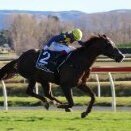-
Available Subscriptions
The Rest of the World
79,826 topics in this forum
-
- Journalists
BloodHorse Promotes Hammonds, Carling, Crosby
-
- Journalists
- 0 replies
- 143 views
-
- Journalists
BloodHorse Promotes Hammonds, Carling, Crosby
-
- Journalists
- 0 replies
- 142 views
-
- Journalists
Silvano Colt Tops Cape Sale
-
- Journalists
- 0 replies
- 133 views
-
-
- Journalists
- 0 replies
- 134 views
-
-
-
- Journalists
- 0 replies
- 152 views
-
-
- Journalists
LWBR and LWBHR Ceremony to Be Live Streamed
-
- Journalists
- 0 replies
- 153 views
-
-
- Journalists
- 0 replies
- 157 views
-
-
- Journalists
Beholder Delivers War Front Filly
-
- Journalists
- 0 replies
- 125 views
-
- Journalists
Fussenegger Appointed Ky Derby Museum VP
-
- Journalists
- 0 replies
- 125 views
-
- Journalists
Champion Beholder Delivers War Front Filly
-
- Journalists
- 0 replies
- 124 views
-
-
- Journalists
- 0 replies
- 95 views
-
-
- Journalists
MNREP, Canterbury Launch New Racing Club
-
- Journalists
- 0 replies
- 166 views
-
- Journalists
Ontario Racing Update on MRP, MPP Programs
-
- Journalists
- 0 replies
- 90 views
-
-
- Journalists
- 0 replies
- 94 views
-
-
- Journalists
Making Their Mark: Caroline Wilson
-
- Journalists
- 0 replies
- 101 views
-
- Journalists
Fasig-Tipton Ky Winter Mixed Catalog Online
-
- Journalists
- 0 replies
- 110 views
-
- Journalists
The Bigger Picture Of Inbreeding
-
- Journalists
- 0 replies
- 114 views
-
-
- Journalists
- 0 replies
- 177 views
-
-
- Journalists
Dubai World Cup Carnival Preview – Week 3 Tips
-
- Journalists
- 0 replies
- 104 views
-
- Journalists
Breeders' Cup Releases Report on Mongolian Groom
-
- Journalists
- 0 replies
- 144 views
-
- Journalists
Steady Trade As Keeneland January Continues
-
- Journalists
- 0 replies
- 156 views
-
- Journalists
KY Sports Betting Bill Could Bolster Purses
-
- Journalists
- 0 replies
- 131 views
-
- Journalists
Asmussen Plots Course for Midnight Bisou, Basin
-
- Journalists
- 0 replies
- 140 views
-
- Journalists
Stallions’ First Foals: Good Samaritan
-
- Journalists
- 0 replies
- 134 views
-
- Journalists
Horseracing Integrity Act Gains Support in House
-
- Journalists
- 0 replies
- 133 views



